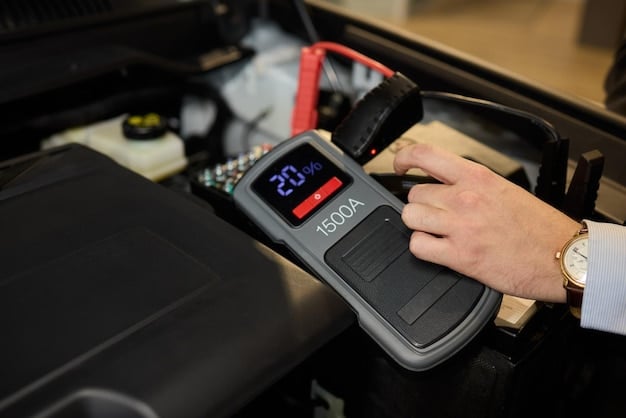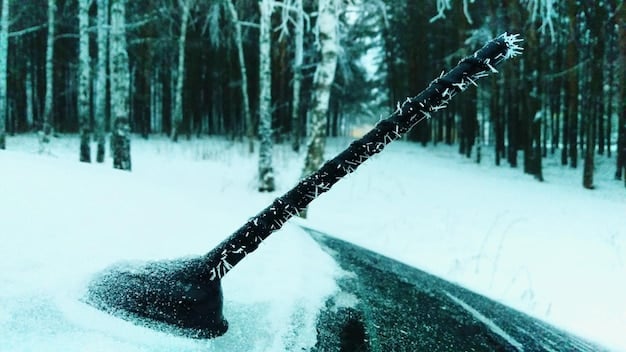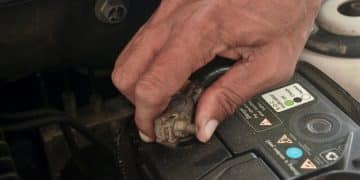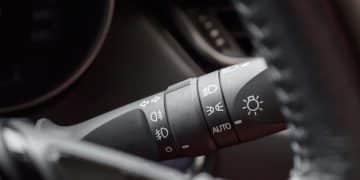Winter Car Care: 5 Essential Maintenance Checks Before December

Winter is Coming: Prepare Your Car with These 5 Cold-Weather Maintenance Checks Before December involves vital tasks like checking your tires, battery, fluids, wipers, and performing an overall inspection to ensure safety and reliability during harsh winter conditions.
As winter approaches and temperatures plummet, ensuring your vehicle is prepared for the harsh conditions is crucial. With Winter is Coming: Prepare Your Car with These 5 Cold-Weather Maintenance Checks Before December, you can avoid unexpected breakdowns and maintain your safety on the road. Let’s get your car ready for the challenges ahead!
Check Your Tires for Optimal Winter Performance
Your tires are the first line of defense against slippery winter roads. Proper tire maintenance ensures you have adequate traction and control, enhancing your safety throughout the season. Neglecting your tires can lead to reduced grip, longer stopping distances, and increased risk of accidents.
Inspect Tire Tread Depth
Adequate tread depth is crucial for winter driving. As tires wear down, their ability to grip the road diminishes, especially on snow and ice. Use the penny test or a tread depth gauge to ensure your tires meet the minimum requirements.
Check Tire Pressure Regularly
Tire pressure decreases in cold weather, affecting handling and fuel efficiency. Check your tire pressure weekly and adjust it to the manufacturer’s recommended levels, which can be found on a sticker inside your driver’s side door or in your owner’s manual.
- Improved Traction: Properly inflated tires provide better grip on icy and snowy roads.
- Enhanced Safety: Correct tire pressure reduces the risk of skidding and improves braking distance.
- Optimal Fuel Efficiency: Underinflated tires increase rolling resistance, leading to higher fuel consumption.
Regular tire inspections and adjustments are essential for safe and efficient winter driving. Keep your tires properly inflated and replace them when the tread depth is insufficient.
Evaluate Your Car Battery’s Health
Cold weather can significantly impact your car battery’s performance. Batteries tend to lose power in low temperatures, making it harder to start your engine. A weak battery can leave you stranded in freezing conditions, so it’s important to assess its health before winter arrives.
Test Your Battery’s Voltage
Use a voltmeter to check your battery’s voltage. A healthy battery should read around 12.6 volts when the engine is off. If the voltage is lower, it may indicate a weak or failing battery. Consider having it professionally tested at an auto parts store.
Inspect Battery Terminals for Corrosion
Corrosion on battery terminals can impede electrical flow and reduce battery performance. Clean the terminals with a wire brush and a mixture of baking soda and water to ensure a good connection. Apply a corrosion protectant to prevent future buildup.

- Avoid Stranded Situations: A strong battery ensures your car startsReliably in cold weather.
- Extend Battery Life: Regular maintenance prevents premature battery failure.
- Ensure Optimal Performance: A healthy battery provides consistent power for all your car’s electrical systems.
Taking the time to evaluate and maintain your car battery can prevent unexpected issues during the winter months, ensuring your vehicle startsReliably and keeps you safe on the road.
Top Off Essential Fluids for Winter
Maintaining proper fluid levels is crucial for your car’s performance and longevity, especially during winter. These fluids protect your engine, brakes, and other vital components from freezing and corrosion. Ensuring they are at the correct levels and in good condition is essential for safe winter driving.
Check Antifreeze Levels and Mixture
Antifreeze prevents your engine coolant from freezing, protecting it from damage. Check the antifreeze level in your coolant reservoir and test the mixture to ensure it provides adequate freeze protection, typically a 50/50 mix of antifreeze and water.
Inspect Windshield Washer Fluid
Winter driving often involves dealing with snow, ice, and road salt, all of which can obstruct your visibility. Ensure your windshield washer fluid reservoir is full and use a winter-specific fluid that won’t freeze. This helps keep your windshield clean and clear.
The right fluids not only protect your car from winter damage but also contribute to safe and efficient driving.
Replace Your Windshield Wipers
Windshield wipers are essential for maintaining clear visibility during winter storms. Worn or damaged wipers can streak and smear, reducing your ability to see the road clearly. Replacing your wipers before winter ensures optimal performance when you need them most.
Inspect Wiper Blades for Damage
Check your wiper blades for cracks, tears, or wear. If they leave streaks or don’t make full contact with the windshield, it’s time for a replacement. Consider using winter-specific wiper blades designed to handle snow and ice.

Test Wiper Performance
Operate your wipers to check their performance. Ensure they move smoothly and efficiently across the windshield, clearing away water and debris without leaving streaks. If they chatter or skip, it’s a sign they need to be replaced.
- Enhanced Visibility: New wipers ensure a clear view of the road, even in heavy snow or rain.
- Increased Safety: Clear visibility reduces the risk of accidents caused by obstructed views.
- Prevent Windshield Damage: Worn wipers can scratch and damage your windshield over time.
Replacing your windshield wipers is a simple but crucial step in preparing your car for winter. Clear visibility is essential for safe driving in adverse weather conditions.
Conduct a Comprehensive Vehicle Inspection
A thorough vehicle inspection can identify potential issues before they become major problems. Checking various components ensures your car is in top condition for winter’s challenges. Pay attention to lights, brakes, and exhaust systems to guarantee everything functions correctly.
Check All Lights and Signals
Ensure all your headlights, taillights, brake lights, and turn signals are working properly. Replace any burned-out bulbs to maintain visibility and ensure you are seen by other drivers. Clean any dirt or snow buildup on the lenses.
Evaluate Brake Performance
Your brakes are crucial for safe winter driving. Check your brake pads for wear and have your brakes inspected by a professional to ensure they are in good working order. Pay attention to any unusual noises or vibrations when braking.
Taking the time for a comprehensive inspection can give you peace of mind and help you avoid unexpected breakdowns during the winter months. Being proactive with maintenance ensures your vehicle is ready to handle any challenge.
Examine the Exhaust System
Check your exhaust system for leaks or damage. A faulty exhaust system can lead to carbon monoxide poisoning, especially if you’re idling in an enclosed space. Listen for unusual noises and have any issues addressed promptly.
| Key Point | Brief Description |
|---|---|
| ❄️ Tire Check | Ensure proper tread depth and pressure for better grip on icy roads. |
| 🔋 Battery Test | Verify battery voltage and clean terminals to prevent starting issues. |
| 💧 Fluid Levels | Check antifreeze and washer fluid to protect against freezing. |
| 🛠️ Full Inspection | Examine lights, brakes, and exhaust for any potential issues. |
Frequently Asked Questions About Winter Car Maintenance
▼
Tire pressure decreases in cold weather, affecting handling. Proper inflation ensures optimal grip on icy roads, improving safety and fuel efficiency. Check and adjust weekly.
▼
Use a voltmeter to check the battery’s voltage. A healthy battery should read around 12.6 volts when off. Low voltage may indicate a weak battery requiring professional testing.
▼
Use a winter-specific windshield washer fluid that won’t freeze in low temperatures. This helps maintain clear visibility by quickly removing snow, ice, and road salt.
▼
Worn wiper blades streak and smear, reducing visibility. Replacing with winter-specific blades ensures optimal performance and prevents windshield damage from ice and snow.
▼
Check all lights, signals, brake performance, and the exhaust system. Ensure everything functions correctly to maintain safety and prevent breakdowns in the winter.
Conclusion
Preparing your car for winter with these five essential maintenance checks will help ensure your safety and keep your vehicle running smoothly during the cold months. By addressing your tires, battery, fluids, wipers, and conducting a comprehensive inspection, you can enjoy safer, more reliable winter driving.





